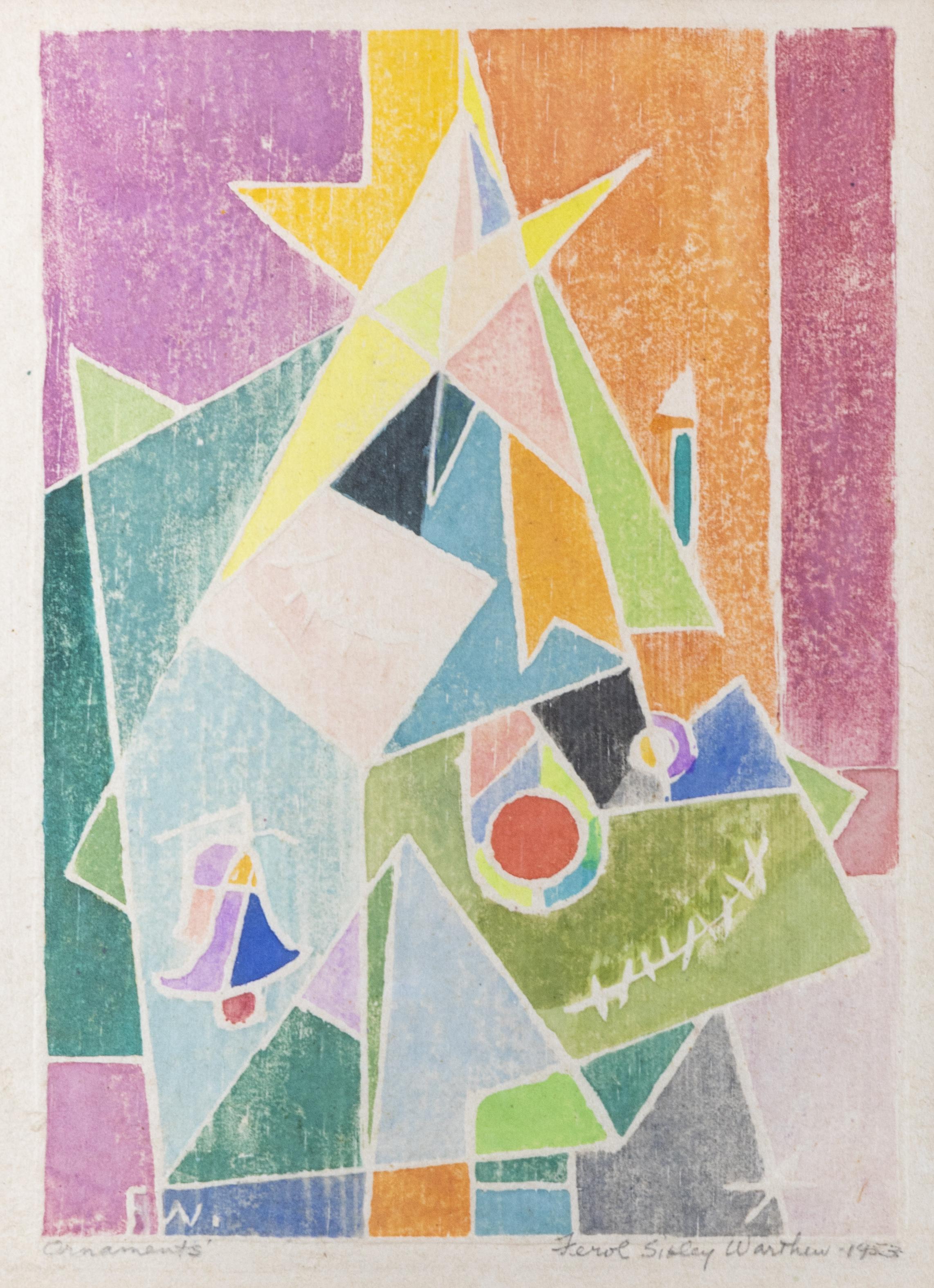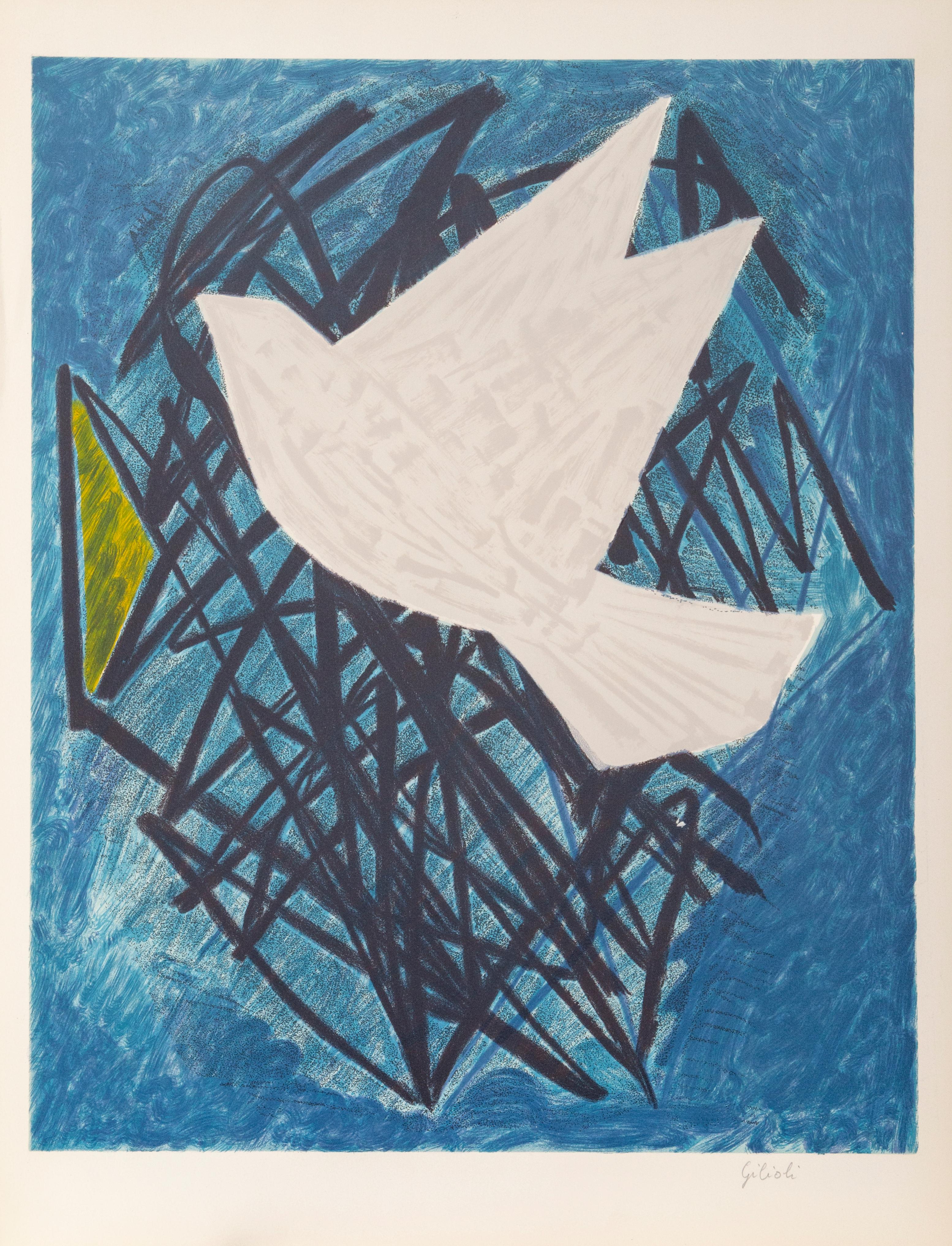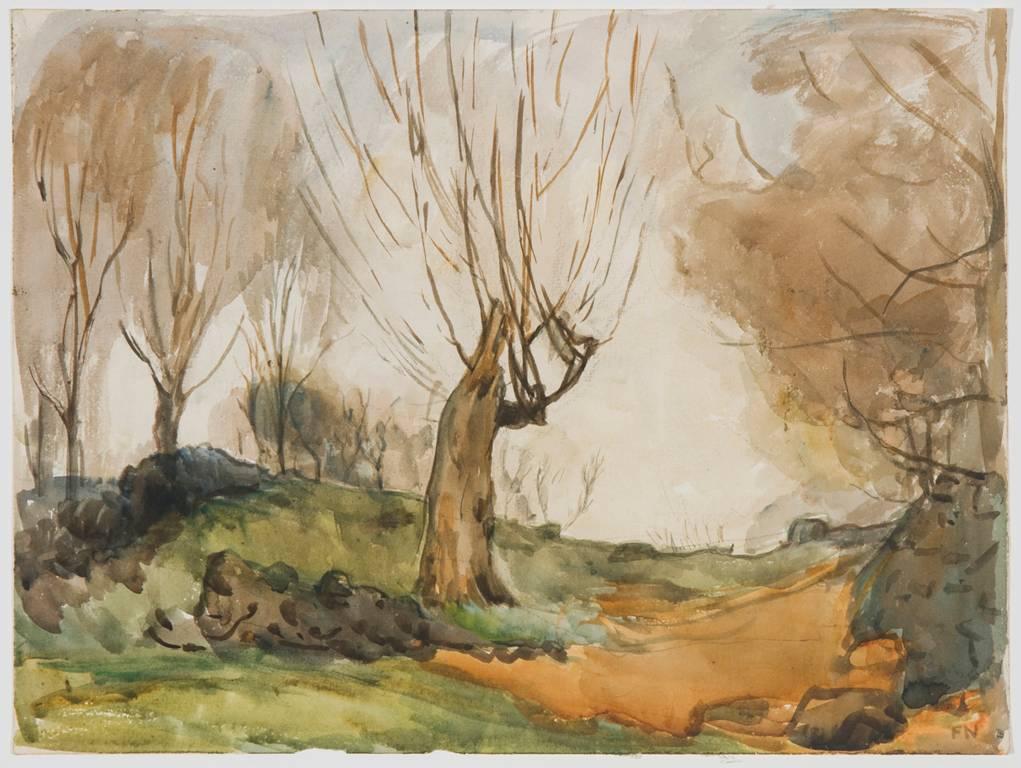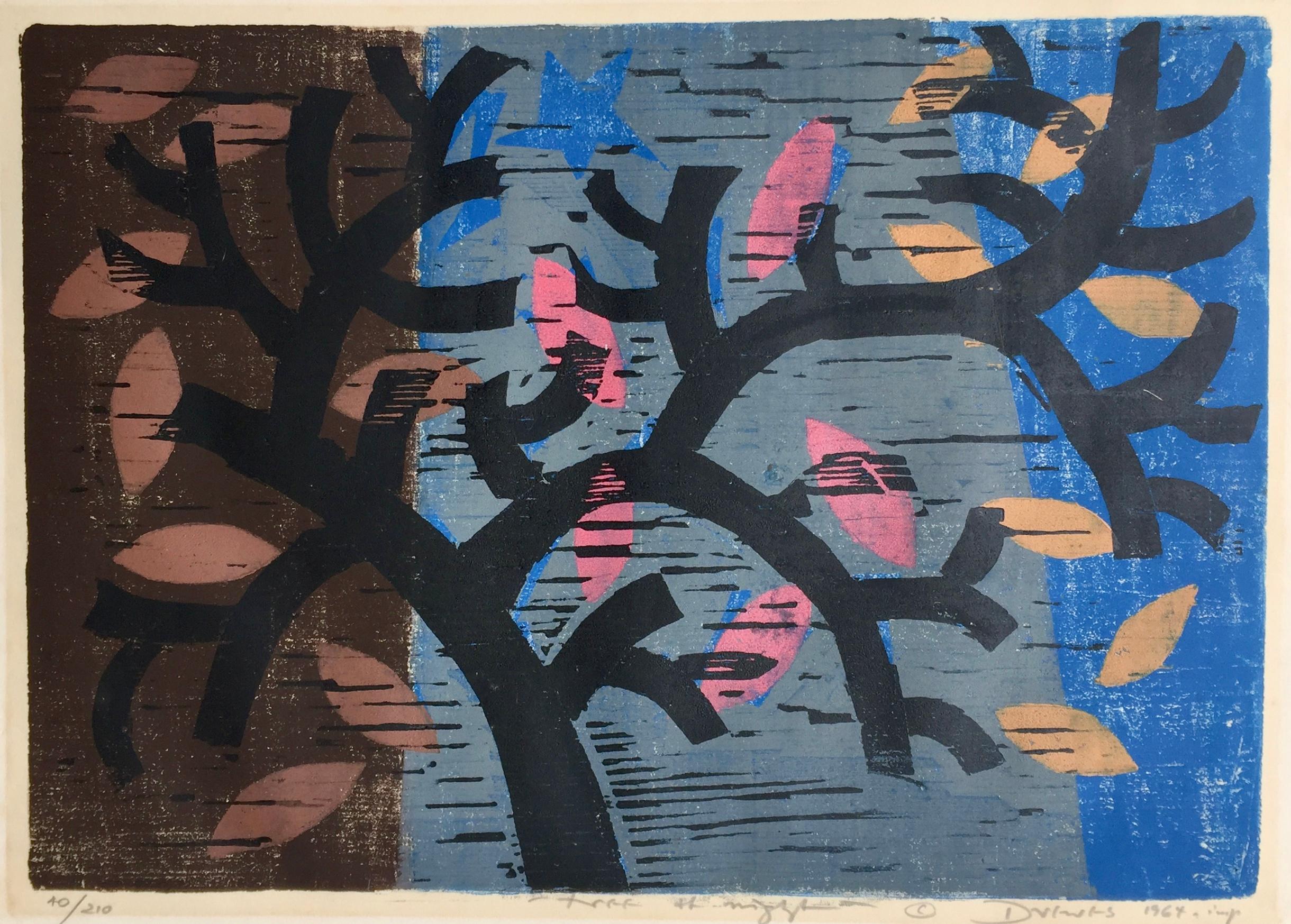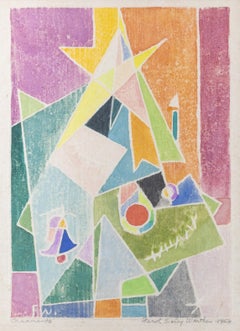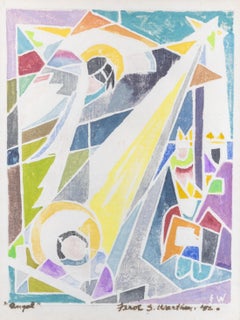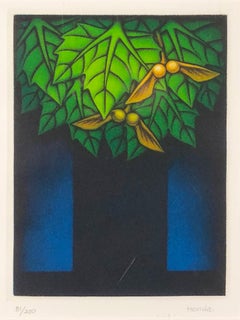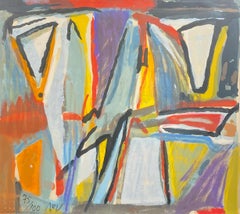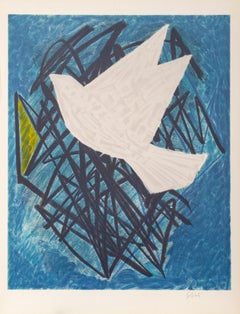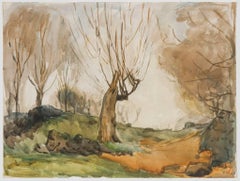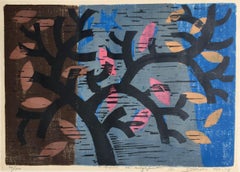Video Loading
Want more images or videos?
Request additional images or videos from the seller
1 of 9
Ferol K. Sibley WarthenTree and Dove
$4,500
£3,473.02
€3,953.83
CA$6,425.61
A$7,008.38
CHF 3,692.82
MX$84,049.21
NOK 46,497.32
SEK 43,381.06
DKK 29,528.14
About the Item
Tree and Dove
Ferol K. Sibley Warthen (American, 1890-1986)
Color Woodblock Print
Edition of 3
6.25 x 4.75 inches
13 x 11.5 inches with frame
Signed Lower Right
Titled Lower Left
Born 1890, Died 1986, Ferrol Warthen was a member of the Provincetown Printers. She was a teacher and an artist who studied under Blanche Lazzell starting in 1950.
She spent her summers in Provincetown, Massachusetts within the thriving art colony of Provincetown at that time. The Provincetown Printers art colony was started in 1915 by B. J. O. Nordfeldt, and a group of other artists who had fled Europe.
Warthen's medium and technique was primarily white line woodcuts on paper, a technique she learned from Blanche Lazzell, who had learned from B. J. O. Nordfeldt. White line woodcuts are done from a single block of wood, as opposed to regular woodcuts that are done from multiple blocks of wood. Each color is done separately and applied to the paper in separate applications
By nature of the technique, these were much harder to accomplish in most cases than the traditional woodcut technique.
- Creator:Ferol K. Sibley Warthen (1890 - 1986, American)
- Dimensions:Height: 6.25 in (15.88 cm)Width: 4.75 in (12.07 cm)
- Movement & Style:
- Period:
- Condition:
- Gallery Location:Missouri, MO
- Reference Number:1stDibs: LU747315197502
About the Seller
5.0
Vetted Professional Seller
Every seller passes strict standards for authenticity and reliability
Established in 1970
1stDibs seller since 2017
156 sales on 1stDibs
Typical response time: 1 to 2 days
- ShippingRetrieving quote...Shipping from: Missouri, MO
- Return Policy
More From This Seller
View AllOrnaments
Located in Missouri, MO
Ornaments, 1953
Ferol K. Sibley Warthen (American, 1890-1986)
Color Woodblock Print
7 x 4.75 inches
16 x 13.75 inches with frame
Signed and Dated Lower Right
Titled Lower Left
Born 1890, Died 1986...
Category
1950s American Modern Abstract Prints
Materials
Color
Angel
Located in Missouri, MO
Angel, 1952
Ferol K. Sibley Warthen (American, 1890-1986)
Color Woodblock Print
6.5 x 5 inches
16 x 13.75 inches with frame
Signed Lower Right
Titled Lower Left
Born 1890, Died 1986...
Category
1950s American Modern Abstract Prints
Materials
Color
Lemon Tree
By Kazuhisa Honda
Located in Missouri, MO
Kazuhisa Honda (b. 1948)
"Lemon Tree" c. 1980s
Mezzotint
Signed Lower Right
Numbered Lower Left 81/250
Site Size: approx. 8 x 5 inches
Framed Size: approx...
Category
1980s Modern Still-life Prints
Materials
Mezzotint
Price Upon Request
Abstract (Edition 75/100)
By Bram Van Velde
Located in Missouri, MO
Abstract (Edition 75/100)
By Bram Van Velde (1895-1981)
Numbered Lower Left
Signed Lower Center
Unframed: 25" x 28"
Framed: 31.5" x 34.5"
Bram (Abraham Gerardus) van Velde was a Dutch painter known for an intensely colored and geometric semi-representational painting style related to Tachisme*, and Lyrical Abstraction*. He is often seen as member of the School of Paris* but his work resides somewhere between expressionism* and surrealism*, and evolved in the 1960s into an expressive abstract art. His paintings from the 1950s are similar to the contemporary work of Matisse, Picasso and the abstract expressionist Adolph Gottlieb. He was championed by a number of French-speaking writers, including Samuel Beckett and the poet André du...
Category
20th Century Abstract Abstract Prints
Materials
Lithograph
Price Upon Request
Sailboat and Gull
Located in Missouri, MO
Sailboat and Gull
Ferol K. Sibley Warthen (American, 1890-1986)
Color Woodblock Print
Edition 31/31
7 x 7 inches
14 x 14 inches with frame
Signed Lower Right
Titled and Numbered Lower Left
Born 1890, Died 1986...
Category
Mid-20th Century American Modern Figurative Prints
Materials
Color
Observador de Pajaros
By Rufino Tamayo
Located in Missouri, MO
"Observador de Pajaros" 1950
By. Rufino Tamayo (Mexican, 1899-1991)
Edition 83/200 Lower Right
Signed Lower Left
Unframed: 15.5" x 22.5"
Framed: 21.75" x 28.25"
Rufino Tamayo (August 26, 1899- June 24, 1991)
A native of Oaxaca in Southern Mexico, Rufino Tamayo's father was a shoemaker, and his mother a seamstress. Some accounts state that he was descended from Zapotec Indians, but he was actually 'mestizo' - of mixed indigenous/European ancestry. (Santa Barbara Museum of Art). He began painting at age 11. Orphaned at the age of 12, Tamayo moved to Mexico City, where he was raised by his maternal aunt who owned a wholesale fruit business.
In 1917, he entered the San Carlos Academy of Fine Arts, but left soon after to pursue independent study. Four years later, Tamayo was appointed the head designer of the department of ethnographic drawings at the National Museum of Archaeology in Mexico City. There he was surrounded by pre-Colombian objects, an aesthetic inspiration that would play a pivotal role in his life. In his own work, Tamayo integrated the forms and tones of pre-Columbian ceramics into his early still lives and portraits of Mexican men and women.
In the early 1920s he also taught art classes in Mexico City's public schools. Despite his involvement in Mexican history, he did not subscribe to the idea of art as nationalistic propaganda. Modern Mexican art at that time was dominated by 'The Three Great Ones' : Diego Rivera, Jose Clemente Orozco, and David Alfaro Siqueros, but Tamayo began to be noted as someone 'new' and different' for his blending of the aesthetics of post Revolutionary Mexico with the vanguard artists of Europe and the United States.
After the Mexican Revolution, he focused on creating his own identity in his work, expressing what he thought was the traditional Mexico, and refusing to follow the political trends of his contemporary artists. This caused some to see him as a 'traitor' to the political cause, and he felt it difficult to freely express himself in his art. As a result, he decided to leave Mexico in 1926 and move to New York, along with his friend, the composer Carlos Chavez. The first exhibition of Tamayo's work in the United States was held at the Weyhe Gallery, New York, in that same year. The show was successful, and Tamayo was praised for his 'authentic' status as a Mexican of 'indigenous heritage', and for his internationally appealing Modernist aesthetic. (Santa Barbara Museum of Art).
Throughout the late thirties and early forties New York's Valentine Gallery gave him shows. For nine years, beginning in 1938, he taught at the Dalton School in New York.
In 1929, some health problems led him to return to Mexico for treatment. While there he took a series of teaching jobs. During this period he became romantically involved with the artist Maria...
Category
20th Century Abstract Abstract Prints
Materials
Lithograph
Price Upon Request
You May Also Like
The Dove, Modern Lithograph by Emile Gilioli
By Émile Gilioli
Located in Long Island City, NY
An original hand-signed limited edition lithograph by famed sculptor Emile Gilioli. Edition of only 75. Émile Gilioli (b. Paris, 10 June 1911, d. Paris,...
Category
1960s Modern Animal Prints
Materials
Lithograph
Untitled (Tree)
By Fred Nagler
Located in Dallas, TX
Fred Nagler was born in 1891 in Springfield, Massachusetts, where he first studied wood carving. From 1914 to 1917, he studied at The Art Students League of New York, where his prof...
Category
20th Century American Modern Landscape Drawings and Watercolors
Materials
Graphite, Paper, Watercolor
Untitled, Two Birds
By Ruth Leaf
Located in San Francisco, CA
This artwork "Untitled, Two Birds" 1991, is an original woodcut monoprint on artisanal hand made paper by noted American artist Ruth Leaf, 1923-2015. It is hand signed and dated in r...
Category
Late 20th Century Abstract Expressionist Abstract Prints
Materials
Monoprint
Tree at Night
By Werner Drewes
Located in Santa Monica, CA
WERNER DREWES (German-American 1899-1985)
TREE AT NIGHT, 1964 (Rose 241)
Color woodcut Signed titled, dated and numbered 40 /210 all in pencil below image. Image 11 1/8 x 15 7/8 inc...
Category
1960s Abstract Expressionist Landscape Prints
Materials
Woodcut
Temporary Tree - Etching by Leo Guida - 1995
By Leo Guida
Located in Roma, IT
Temporary Tree 1 is an original Contemporary artwork realized in 1995 by the italian artist Leo Guida (1992 - 2017).
Original mixed colored etching.
Hand signed on the lower right...
Category
1990s Abstract Figurative Prints
Materials
Etching
Oiseaux - Lithograph after Georges Braque - Mid-20th Century
By (after) Georges Braque
Located in Roma, IT
Oiseaux is an lithograph realized by an anonymous artist after Georges Braque in the 20th Century.
Printed by Mourlot. Good conditions.
The artw...
Category
Mid-20th Century Cubist Figurative Prints
Materials
Lithograph
More Ways To Browse
American Woodblock
American Woodblock Prints
Salvador Dali Elephant
Salvador Dali Signed Prints Elephant
Vintage Beagle Art
African Hunting Art
Andy Warhol Cow Prints
Andy Warhol Cow
Arader Gallery
Audubon Squirrel
Audubon Woodpecker
David Hockney Dog
Hockney Dog
Lee Lozano
Leon Danchin Etching
Leon Spilliaert
Leopard Lithograph
Matthaus Merian
